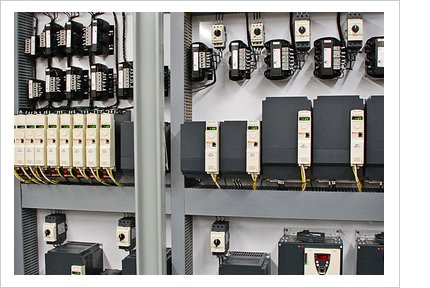
Introduction: In today’s technologically advanced world, industrial processes and machinery require sophisticated control systems to optimize performance, enhance energy efficiency, and ensure smooth operations. One such integral component is the Variable Frequency Drive (VFD) panel. In this blog, we will explore the fundamental aspects of VFD panels, their functionalities, and the benefits they offer to industries.
Understanding VFD Panels: A VFD panel, also known as a Variable Frequency Drive panel or simply a Drive panel, is an electrical enclosure that houses a Variable Frequency Drive. The VFD is an electronic device that controls the speed and torque of an electric motor by varying the frequency and voltage supplied to it. The VFD panel acts as a central control system for managing and monitoring the VFD’s operation.
Components and Functionality: A typical VFD panel consists of several components working in harmony to regulate the motor’s speed. Let’s delve into the key components and their functionalities:
- Variable Frequency Drive (VFD): The heart of the panel, the VFD converts the incoming AC power to DC and then back to AC at varying frequencies and voltages, enabling precise control over the motor’s speed and torque.
- Human-Machine Interface (HMI): The HMI provides a user-friendly interface for operators to interact with the VFD panel. It allows them to set parameters, monitor performance, and receive real-time data on motor status, energy consumption, and fault diagnostics.
- Control Circuit: The control circuit consists of relays, contactors, and other devices that handle the electrical signals and commands from the HMI, initiating or stopping the motor as instructed.
- Power Circuit: The power circuit comprises various protective devices like circuit breakers, fuses, and surge suppressors. It safeguards the motor and the VFD against voltage fluctuations, short circuits, and electrical faults.
Benefits of VFD Panels: VFD panels offer numerous advantages to industries across diverse sectors. Here are some key benefits:
- Energy Efficiency: VFD panels facilitate significant energy savings by precisely matching the motor speed to the required load, reducing power consumption during low-demand periods. The ability to ramp up the motor gradually also eliminates power surges and reduces mechanical stress, extending the motor’s lifespan.
- Process Optimization: With VFD panels, industries can fine-tune the motor’s speed to optimize process parameters such as flow rates, pressure, and temperature. This flexibility enhances overall process efficiency and quality while minimizing downtime and maintenance costs.
- Cost Savings: By reducing energy consumption and optimizing processes, VFD panels contribute to substantial cost savings over time. The initial investment in installing VFD panels is often offset by long-term operational benefits, making them a smart and cost-effective solution.
- Enhanced Motor Control: VFD panels provide precise control over motor speed, torque, and acceleration, resulting in improved performance, reduced wear and tear, and enhanced productivity. Soft-start and soft-stop features minimize mechanical stress, leading to smoother operations and reduced maintenance requirements.
Applications of VFD Panels: VFD panels find applications in a wide range of industries, including manufacturing, oil and gas, HVAC (Heating, Ventilation, and Air Conditioning), water treatment, and more. They are used in pumps, fans, conveyors, compressors, mixers, and other motor-driven systems where speed control and energy optimization are crucial.
Conclusion: Variable Frequency Drive (VFD) panels have become indispensable in modern industrial setups, empowering businesses with precise control over motor speed, energy efficiency, and process optimization. With their ability to reduce energy consumption, enhance motor performance, and deliver substantial cost savings, VFD panels are a vital asset for industries striving for improved productivity and sustainability.
Conclusion: Variable Frequency Drive (VFD) panels have become indispensable in modern industrial setups, empowering businesses with precise control over motor speed, energy efficiency, and process optimization. With their ability to reduce energy consumption, enhance motor performance, and deliver substantial cost savings, VFD panels are a vital asset for industries striving for improved productivity and sustainability.
